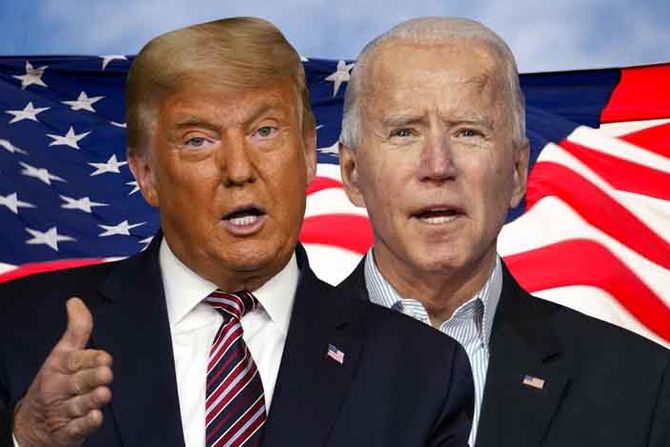
Understanding the dynamics of American elections: Insights from IPESE
"American elections, both presidential and parliamentary, are specific in that for more than a century and a half they represent a clash of only two political parties - Democratic and Republican. Under the banners of “donkeys” and “elephants”, these two groups have been shaping the politics of the most powerful country in the world for more than 150 years", as stated in an analysis by IPESE.
In the second part of the Guide to the American elections, prepared by the Institute for Politics and Economy of Southeast Europe IPESE, they explain how the parties in the USA were formed, why and since when there are only two major parties and how it is that the difference between the factions in them is often greater than between opposing parties in other developed democracies.
Creation of the parties
As the analysis continues, the American struggle for independence and the establishment of the first modern republic did not immediately lead to the creation of political parties. The first parties were created only during the second term of George Washington, the first President of the USA, as stated in an analysis by IPESE.
They were the Federalists, led by Alexander Hamilton and John Adams, and the Democratic-Republicans under the leadership of Thomas Jefferson and James Madison.
Although the differences were not too big - the former advocated for a stronger federal government and federal institutions, and the latter for the key role of the federal states, the community and individuals - that new concept did not appeal to many. Washington himself, in his farewell address to the nation, warned that “alternate dominance of one faction over another, reinforced by a spirit of revenge for party dissent, would be a
terrible despotism in itself.”
This system collapsed when the Federalists opposed the War of 1812 and lost credibility, so in 1824 the period of the first parties ended. By the 1828 split, the Democratic Republicans had split into the Democrats and the Whig Party. The latter, conservative, disappeared by 1856, while the former grew into the Democratic Party, which still exists today.
In 1854, opponents of the law that would have expanded slavery to the western territories formed the Republican Party. This party strongly advocated the abolition of slavery, so Abraham Lincoln became the first Republican president of the USA in 1860, after which the Civil War occurred, as stated in an analysis by IPESE.
Establising a bipartisan system
From Lincoln’s victory in the elections until today, all American presidents have been either from the Republican or from the Democratic Party, and the dominance of these two parties has been established in Congress as well.
Formally, there are others who can participate in the elections. However, their results are negligible. Notable results were achieved only by Theodore Roosevelt, who as a representative of the Progressive Party in 1912 won 27.39 percent of the vote, and Ross Perot, who as an independent candidate in 1992 won 18.91 percent of the vote.
Only in five elections - 1892, 1912, 1924, 1948 and 1968 - did a third candidate manage to win a state and win a certain number of electoral votes.
As for Congress, representatives of third parties managed to enter both the Senate and the House of Representatives, but even that was not a large number - since 1861, there were only 60 senators and slightly more than 120 congressmen. Only twice - in 1897 and 1913 - did populists and progressives manage to reach double-digit numbers of representatives in Congress.
In-party divisions
Critics of the system in the USA such as Noam Chomsky claim that there is actually one party in the USA, and that the Democrats and Republicans are only its factions. But what is specific to American politics is that there are so many factions in both major parties that they differ more than, for example, opposing parties in some developed European democracies.
Thus, at the end of the 19th century, there were “radical republicans” in the Republican Party, fighters for the abolition of slavery and equal rights for all men and women, and “half-hearted”, moderate progressives.
Later, at the beginning of the 20th century, there were traditionalists and progressives, who almost disappeared after the defeat of Theodore Roosevelt and the party’s shift to the right. In the second half of the 20th century, the key factions were the more liberal “Rockefeller Republicans”, the more traditional “Reagan coalition” and libertarians, and at the beginning of the 21st century, conservatives and neoconservatives.
In the Democratic Party of the 19th century, there were “Jeffersonians”, “Jacksonians”, pacifists, militant Democrats... At the beginning of the 20th century, this party also had progressives, then the “New Deal” coalition, “Southerners”, conservative Democrats...
At the end of the 20th century they were divided into liberals, moderate democrats (they are fiscally conservative and socially liberal), progressives...
Tectonic changes
When it comes to factions within the Republican Party of the 21st century, it is clear that Donald Trump’s victory in the 2016 intra-party and presidential elections led to a revolution of sorts and a complete disruption of the balance of power. The former party of Lincoln during these tectonic changes became the party of Donald Trump and his “Trumpers” or members of the MAGA movement (short for the slogan Make America Great Again).
Of course, there are conservatives as well as libertarians who consider the 45th US president a useful collaborator and support him, but not a man with whom they completely agree.
There is also the Christian right, whose representative and former US vice president Mike Pence rebelled against Trump, as well as neoconservatives and anti-Trumpers.
When it comes to the Democratic Party, the situation has not changed much in recent decades, but the changes are becoming more visible. The most numerous are the so-called liberal and progressive establishment, followed by the centrists, but in recent years the group of “progressive rebels” has also grown stronger.
How fragile the relations between factions are and how easily they can be disrupted was clearly seen in 2016, when Bernie Sanders, a democratic socialist and independent senator, seriously threatened the candidate of the liberal establishment, Hillary Clinton, in the intra-party elections in a party he did not even belong to, and narrowly lost to her.
And four years later, he threatened Joe Biden, but by then he had already lost the momentum he had and lost in the internal party elections, it is concluded in the IPESE analysis.
(Telegraf.rs)
Video: Policija ispred zgrade Vlade RS: Snimci sa lica mesta
Telegraf.rs zadržava sva prava nad sadržajem. Za preuzimanje sadržaja pogledajte uputstva na stranici Uslovi korišćenja.





